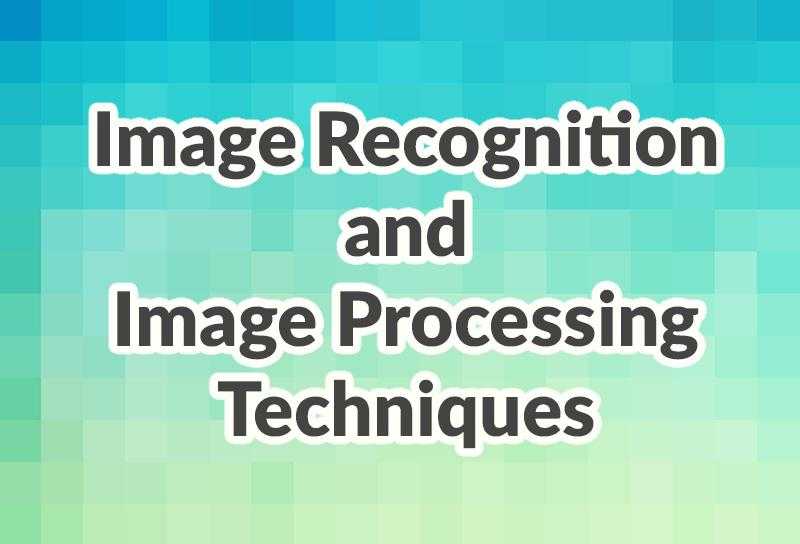
An image recognition technology has a great potential for wide adoption in various industries. In fact, it’s not a technology of the future, but it’s already our present. Such corporations and startups as Tesla, Google, Uber, Adobe Systems etc heavily use image recognition. To prove that the technology marches around the world let’s look at the recent statistics. Researchers predict that the global market of image recognition will reach $38.92 billion by 2021. That’s quite a sound figure! So no wonder that more and more so-called imagetech applications that leverage image recognition emerge for various purposes and business verticals.
What helps the expansion of image recognition technology today? It’s open-source tools that make programming easier while computing more affordable. Open-source frameworks and libraries today make it possible for companies to benefit from image recognition technology exponentially. For instance, such massive open databases as Pascal VOC and ImageNet give access to millions of images. In fact, they help companies and image tech startups to develop and improve their own machine learning apps and algorithms. For a real-time image recognition, professional developers also use an open-source, cross-platform library called OpenCV. It’s considered the first point of addressing and the most authoritative resource for image recognition professionals. Another great set of libraries for computer vision include OpenNN, VXL and many other.
How can we use the graphics?
But before jumping into more details on image recognition and processing it should be mentioned that images can be used in different ways. In mobile, web and software development images serve for a multitude of reasons, including:
- Object recognition
- Pattern recognition
- Locating duplicates (exact or partial)
- Image search by fragments
- Camera’s image processing
- Improving mobile apps UX
- Augmented reality
Possible applications of images, imagetech and image recognition technology, in particular, have no limit. With the advancements in the technology new opportunities for businesses and startups in every niche arise. Thus image analysis leads to a whole new level thanks to open-source solutions and deep learning tools out there.
Image Recognition
The image recognition or computer vision is a technical discipline that deals with searching the ways to automate all the job that a human visual system can do. TensorFlow by Google, DeepFace by Facebook, Project Oxford by Microsoft are great examples of deep learning image recognition systems. On the other hand, hosted APIs such as Google Cloud Vision, Clarifai, Imagga allow businesses to save some money on the costly computer vision development teams.
Advantages of open-source services mentioned are numerous. They conduct image recognition computing in the cloud making your imagetech business operations more efficient and much cheaper. Also, in-house developers at your company can integrate their APIs into your apps without problems. Moreover, these open APIs developers can use to even start a new business in the field of image recognition.
Image Processing Techniques
Generally, image processing consists of several stages: image import, analysis, manipulation and image output. There are two methods of image processing: digital and analog. In particular, digital image processing and its techniques is what this article is about.
Computer algorithms play a crucial role in digital image processing. Developers use multiple algorithms to solve different tasks, including digital image detection, analysis, reconstruction, restoration, image data compression, image enhancement, image estimation and image spectral estimation.
What are the major techniques of digital image processing?
-
- Image Editing, which basically means altering digital images by means of graphics software tools.
- Image Restoration, which refers to the estimation of a clean original image out of the corrupt image taken in order to get back the information lost.
- Independent Component Analysis, which separates a multivariate signal computationally into additive subcomponents.
- Anisotropic Diffusion, which is often known as Perona-Malik Diffusion, makes it possible to reduce image noise without having to remove important parts of the image.
- Linear Filtering. It’s another digital image processing technique, which refers to processing time-varying input signals and producing output signals that are subject to the constraint of linearity.
- Neural Networks, which are computational models widely used in machine learning for solving various tasks.
- Pixelation, which often refers to turning printed images into digitized ones (such as GIF).
- Principal Components Analysis, a digital image processing technique that can be used for feature extraction.
- Partial Differential Equations, which also is dealing with effectively de-noising images.
- Hidden Markov Models, a technique used for image analysis in two dimensions.
- Wavelets, which stands for a mathematical function that’s used in image compression.
- Self-organizing Maps, a digital image processing technique for classifying images into a number of classes.
How Adoriasoft Applies Image Processing Techniques

Over the years Adoriasoft has implemented image processing techniques in multiple projects, including e-commerce web and mobile apps for its clients. For one of its major customers, we created an object recognition tool called Object Mask. Developed in Delphi, the app creates a mask of an object. Thus e-commerce website users and those of mCommerce apps can see all relevant items in their search for similar goods. In addition, our clients may leverage the technology behind the app to the maximum extent and benefit from their clients’ repetitive purchases.
Speaking about more projects on image processing and image recognition Adoriasoft has also developed Duplicate Photo Cleaner for another its client. The technology implemented in the software compares all images on the PC or Mac system of a user and locates duplicate images. According to the manually set duplicate threshold (of up to 100%), the app is able to find exact or partially duplicated images. Using grayscale comparison feature users are able to locate duplicate photos among their black and white photo collection.
Our experience
Adoriasoft has a profound expertise working with images and visual data processing using top libraries, tools, and frameworks. Thus our team of developers and UX designers are well-versed in, but not limited to:
- working with all common image formats, including RAW, TIFF, HD Photo files, as well as XMP and EXIF fields;
- manipulating PSD layers, as well all kinds of image processing such as rotation, cropping, auto-cropping, perspective adjustment, flipping, zoom, resizing;
- applying multiple image effects and filters;
- acquiring images and video from cameras, scanners, portable devices that are WIA and Twain compatible;
- using all known selection types and color adjustment facilities;
- detecting skew and edge;
- removing red-eye and chromakey background;
- converting color ranges and much more.
If you’re looking for a highly qualified mobile app development partner that is also skillful in image recognition technology and image processing then turn to Adoriasoft. Contacts us today and we will provide you a free consultancy and estimation of your project!
P.S. Recently, we’ve created a detailed guide on how to promote your mobile app. Take a look at it if you want to know how to spread a word about your project and earn money from it.